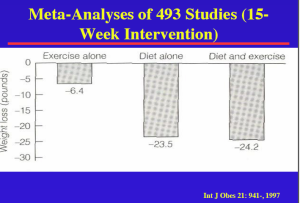Calorie Recommendations, Dieting, and Exercise
Preface
When you’re trying to lose weight, how many calories is too low? This question seems simple up front, but upon researching for “the correct” answer, I found that it comes down to what is called “clinical judgement.”
There are a variety of ways to assess how many calories you should be eating, called calorimetry, the measurement of calories. The current best way to find it during one point in time is indirect calorimetry, where an estimate is taken based off of carbon dioxide to oxygen ratio per gas volume. Direct calorimetry, or where changes in heat are observed in a closed environment, is not practical for humans.
Without indirect calorimetry, the next best way is to look at what you typically eat for a long period of time and find the average caloric intake from food journaling. Food journaling is one of the best ways to assess your diet and look at what is working and what isn’t and serves a number of purposes beyond just finding the calories you typically eat.
Unless you walk around with an indirect calorimeter on all the time, the device is only so useful because it only looks at your needs based off of one data point in time.
Then we are left with predictive equations like the Mifflin-St. Jeor equation, which is the current most popular equation for predictive energy needs (1, 2). These give you an estimate for your resting metabolism. Then you must add an estimate of energy expenditure based on your activity, which honestly is an educated guess.
Predictive equations are great for a population but may not be as accurate for any particular individual. You can assess your caloric intake on this website or use any online calculator you want.
What is Formally Recommended for Weight Loss
The simple answer is this one-size fits all calorie recommendation found in the Evidence Analysis Library (EAL) of the Academy of Nutrition and Dietetics. For women, 1200-1500 Calories are recommended for weight loss along with physical activity. For men, 1500-1800 Calories are recommended for weight loss along with physical activity.
Having completed the Commission on Dietetic Registration’s Self-Study Module for Adult Weight Management, as well as having seen evidence of this during my master’s and seen this in the EAL, we know that exercise is not an effective way to lose weight from a physiological standpoint. Perhaps from a psychological or sociological standpoint, exercise is helpful because of reinforcement of good habits, including dietary habits.
Granted, we all know someone who has lost some weight with exercise, but having not followed them around to see how exercising changed their diet habits, I am still skeptical. Some of my clients are very sure that they have lost weight with exercise alone and no diet change, so perhaps the research isn’t as sensitive to this or the particular people it has that effect on.
Exercise calorie deficits vary widely depending on how fit you are and what you do. It is possible that some populations may be able to achieve weight loss from exercise, but it is a small percentage in the big picture, according to the research.
Below is a graph from some pooled evidence on whether diet or exercise is more effective for weight loss. Notice how old the study is, yet people are still trying to exercise off their weight.
Very Low Calorie Diets (VLCDs)
According to the 2009 Position Paper of the Academy of Nutrition and Dietetics on Weight Management, a very low energy (calorie = energy) diet (VLCD henceforth), is defined as “800 Calories (or 6-10 kcal/kg) or less per day” and is typically in the form of liquid meal replacement supplements that are fortified with 100% of vitamin and mineral needs.
These are prescribed under the supervision of an MD for people who are obese by BMI or overweight with comorbidities (like diabetes, cardiovascular disease, etc.). They are supposed to result in rapid weight loss and can help provide encouragement to individuals with the fast results. They are not recommended without a healthcare professional’s supervision because you REALLY have to make sure you make your calories count in terms of maximizing the nutrition density per calorie.
Some nutrients are of concern. When you are not consuming a lot of food, electrolytes such as sodium and potassium, which aid in nerve impulse conduction and heart contractions (mainly calcium) can lead to heart arrhythmias. Gallstone formation is another complication possibly due to less fat in the diet, and bile can concentrate with less gall bladder contractions.
If you are 250 lbs, a VLCD could be as low as 682 Calories or as high as 1136 Calories. The 800 Calorie number is open to clinical judgment. If you are 140 lbs, a VLCD could be as low as 382 Calories or as high as 636 Calories. That said, you probably would not need to be on a VLCD at 140 lbs.
Since a VLCD starts at 800 Calories and requires medical supervision, beware of any diet that asks you to go to 800 or below calories. The cabbage soup diet is a medically unsupervised, VLCD that does not provide the array of nutrients for meeting nutrition needs, yet people go on it often considering how popular it is. I haven’t heard of anyone dying on it, but if you have, please let me know in the comments.
The calorie range of 800-1200 Calories seems to be a range of numbers where not much guidance is given in terms of recommendations for healthcare practitioners. Many physicians fear going below 1200 Calories with patients, but unfortunately, some people just won’t lose weight at that level of calories.
That said, physician education on nutrition is limited to an elective or two during medical school, should they decide to take it and is not standardized across medical schools. “On average, [medical] students received 23.9 contact hours of nutrition instruction during medical school (range: 2–70 h).” So asking your doctor how many calories you need may not be the right question unless they actually studied nutrition.
Does this mean a recommendation of 850 Calories is too low? It isn’t a VLCD, by definition, and would not require physician supervision. It depends on who is recommending it and for whom. A smaller person needs fewer calories than a larger person, so 850 may be very low for someone very large while it may be just low calories for someone smaller.
Registered dietitians are trained to make sure the calories count in your diet to avoid health risks while dieting. Most of us will not even recommend something that low unless the patient has unsuccessfully tried other levels.
Summary
The take away from all this is that figuring out how many calories you need takes some effort. We can estimate with equations and calorimetry. Food journaling is the best way to figure out how to make changes to your diet and see where you can improve.
Very low calorie diets (VLCDs) are generally considered to start at 800 Calories and are not recommended unless you are speaking with someone who studied nutrition and have worked with them unsuccessfully trying other less extreme approaches.
Exercise is not considered a good way to lose weight unless it makes you make better food choices. It will make you fitter and healthier though so should be encouraged.
If you like this post, please comment and share. If you don’t like this post, please let me know why in the comments.



